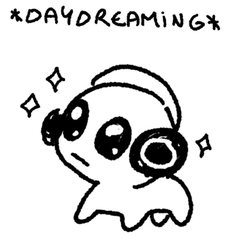Composition Tips: An Astronaut On A Alien Planet
Welcome to this tutorial!
Here, I will be going through the process of creating a concept Illustration and some composition tips you can use to help create a compelling and dynamic Illustration.
Let's get Started!
Step 1: Gather Refrence & Inspiration.
I start off by gathering up images that I think will be a good reference and help me to depict my Alien landscape. Desert scapes, rocky formations, crystals etc.
Step 2: Thumbnails
Once I've got a good idea in my head about my image I start drawing thumbnails;
Creating four rectangular boxes, you can begin to try out various different compositions.
I try out different shapes and sizes for my crystals and rock formations. Picking elements I think best draw attention to the image.
Canvas Size:1920px - 1080px
Using: Pencil/G-pen
Step 3: Final Sketch/Rule Of Thirds
Having decided on a compostion. I'm happy to start sketching.
I merge a few ideas I have from my thumbnails into one image and try and have a couple of different overlapping elements to create a sense of depth.
Beginning the final sketch:
I create a layer folder to begin - Named: Outlines.
Then create individual layers for each element and begin to draw.
While doing this, I also make a new layer and draw a 3x3 Grid.
By using the intersecting lines as a guide (This is where you want the viewer's attention to lead)
I position my focal point (The Rocky Tower) In the top right and my other elements in other sections. Ensuring my other focal point(The Astronaut) is near the bottom left focal point.
*You can also create a grid by going to view>grid. Then editing the section in the Grid/ruler setting in the view menu.
Step 4: Values
For the next step I begin to think about lighting and general colours/surfaces of my image.
this helps me think of what my values will be.
Creating Another folder - Named: Values.
I repeat creating a new layer for each element and begin adding the tones of each object
(This will be important later, as these will be the layers I'll use to add colour)
*Remember the further something away is in the background, the lighter in shade it will be.
Fill Using: G-Pen/Paintbucket tool.
Step 5: Start Adding Shadows
Now, Let's Start Getting Some Depth!
Creat another Folder - Named: Shadows.
And I create two layers - One for shading(Ambient Occlusion) and another for cast shadows.
I Set these to 50% opacity.
My little ball in the corner helps me figure out where my shadows will be.
Using: Light Pencil
Step 6: Render Shadows
I continue to render the shadows and add more shading.
To help give my image even more dimension I lighten my outlines by 40 % - 50%
by decreasing the opacity.
Create shading Using: Light Pencil/Coloured Pencil.
Step 7: Add Highlights
Begin by creating a new layer on top of your shadow's layers and name it 'Hightlights'
Using white, I paint the areas that will be the lightest and to add a little texture I use the 'real pencil'
You can play around with the opacity levels and blending modes for your highlights to give off different intensities.
Step 8. COLOUR!
I begin by duplicating my Values folder and Renaming 'Colour'
Setting the blending mode of this folder to 'Colour'.
Make sure each layer has transparency lock on! and go!
I decrease the opacity levels of some layers by 10 %- 15%
Using: Airbrush
Step 9. Final Touches
When Happy with your colour's you can start to clean up the image a bit more if you wish. which I do:
Softening my outlines and downsizing my astronaut.
Duplicateing and bluring my 'rainbow'
Then I collapse my illustration into a single layer.
Filter>Render> Perlin noise.
Set the scale and amplitude to low.
And finally create curves adjustment layer to add a little more contrast.
There we have it! An Astronaut on an alien Planet.
I hope this tutorial helped you!
Thank you for viewing.
























Comment